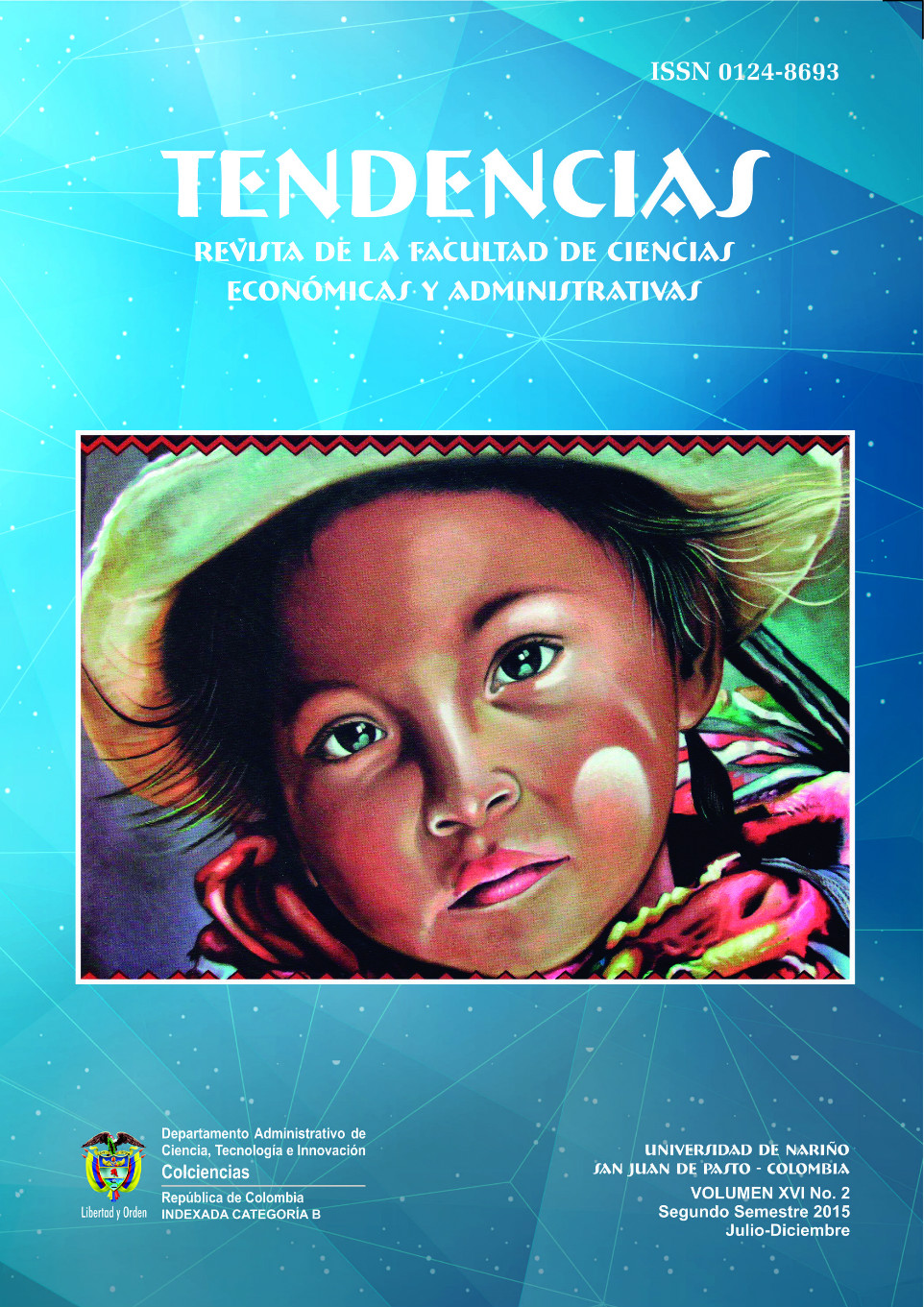Models of oil exploitation of Ecuador and Colombia: an analysis from the extractivism and neoextractivismo (second part)
DOI:
https://doi.org/10.22267/rtend.151602.19Keywords:
extractivism, neoextractivismo, oil exploitation models, Colombia, EcuadorAbstract
In the first part of this work described the conceptual elements around the two types or styles of extractivism. At the same time, gave a presentation of the main changes in the regulatory framework of the oil sector in two countries analyzed: Ecuador and Colombia. The second part, which here appears, has like target, make an empirical review of two models of oil exploitation.
In the quantitative analysis was found important differences in the evolution of the oil sector of the two countries. In the Ecuadorian case, the State was capable to develop an active policy focused on capturing a greater share of the oil income. In Colombia, for his part, was structured a regulatory framework aimed at attracting of capital, that in a context of increase of the prices, made possible a significant increase of the oil production. However, doing the comparison of the conceptual referents concerning to the two types of extractivism and the evolution of the productive and fiscal dynamic the divergence aren't so obvious.
Downloads
References
(1) PODÓNICO, Humberto (2004). Reformas e inversión en la industria de hidrocarburos de América Latina. Revista de la CEPAL, serie “Recursos Naturales e Infraestructura”, núm. 78, Santiago de Chile.
(2) PODÓNICO, Humberto (2007). La gestión de la industria de hidrocarburos con predominio de empresas del Estado. CEPAL/GTZ, serie “Recursos Naturales e Infraestructura”, núm. 121, Santiago de Chile.
(3) PODÓNICO, Humberto (2008). Renta petrolera y minera en países seleccionados de América Latina, CEPAL/GTZ, Documento de proyecto, Santiago de Chile.
(4) VA, Simón y ORTIZ, María (2013). Ingresos fiscales por explotación de hidrocarburos en Ecuador. Departamento de países del grupo andino, Título IV, Serie IDB-PB-198, Banco Interamericano de Desarrollo.
(5) YNAS, Eduardo (2011a). Más allá del nuevo extractivismo: transiciones sostenibles y alternativas al desarrollo. En: el desarrollo en cuestión, reflexiones desde América Latina, Fernanda Wanderley (Coord.), Oxfam y CIDES UMSA, Bolivia, pp. 379-410.
(6) YNAS, Eduardo (2011b). “Alcances y contenidos de las transiciones al Post-Extractivismo”, En: Ecuador Debate, núm. 82, Quito, pp. 61-80.
(7) YNAS, Eduardo (2012). “Estado compensador y nuevos extractivismos las ambivalencias del progresismo sudamericano”. En: Revista Nueva Sociedad, núm. 237, pp. 128-146.
(8) YNAS, Eduardo (2013). “Extracciones, extractivismos y extrahecciones. Un marco conceptual sobre la apropiación de los recursos naturales”. Observatorio del desarrollo No. 18. Centro Latinoamericano de Ecología Social.
(9) EZ, Carlota (2010). “Dinamismo tecnológico e inclusión social en América Latina: una estrategia de desarrollo productivo basada en los recursos naturales”. Revista de la CEPAL, núm. 100, pp. 123-145, Santiago de Chile.
(10) ILLO RIASCOS, Luis Hernando (2014). “Extractivismo clásico y neoextractivismo, ¿dos tipos de extractivismos diferentes? (primera parte)”. Revista Tendencias, Vol. XV, No. 2, 2do. semestre de 2014, Facultad de Ciencias Económicas y Administrativas, Universidad de Nariño, pp. 11-29.
(11) S, Joseph (1999). “Una estrategia de desarrollo a partir de los complejos productivos (clusters) en torno a los recursos naturales ¿una estrategia prometedora?”. Revista de la CEPAL, núm. 66, pp. 105-125, Santiago de Chile.
(12) ÓN, Hernán; LOZANO, Ignacio y RAMOS, Jorge. (2008). “Rentas petroleras, subsidios e impuestos a los combustibles en Colombia: ¿qué ocurrió durante el reciente choque de precios?”. Borradores de Economía, núm. 541, Banco de la República.
(13) AD DE PLANEACIÓN MINERO ENERGÉTICA [UPME] (2013). Cadena del Petróleo 2013. Bogotá.
Published
How to Cite
Issue
Section
License
Those authors who have publications with this journal, accept the following terms:
This journal is licensed under a Creative Commons Reconocimiento-NoComercial 4.0 Internacional License. The articles can be copied, distributed, adapted and communicated publicly, as long as the credits of the work are recognized and the respective source is quoted. This work can not be used for commercial purposes.
To increase their visibility, documents are sent to databases and indexing systems.
The content of the items is the responsibility of each author, and does not compromise in any way, journal or institution.







































